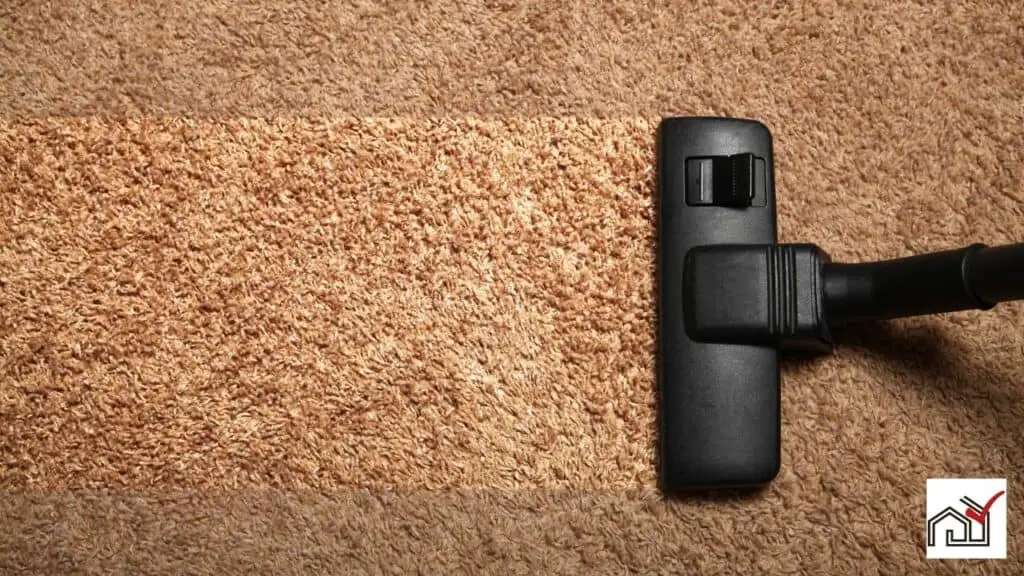Carpets are common in homes and workplaces and are often looked at for their impact on indoor air quality. While carpets themselves don’t create dust, they can trap dust, skin cells, and microorganisms. If not cleaned regularly, these trapped particles can be released back into the air, increasing indoor dust levels.
The amount of dust in carpeted areas depends on how much the carpet is used, what it’s made of, and how often it’s cleaned. It’s important to keep carpets clean to reduce dust and maintain a healthy environment for people using the space.
Carpet Composition and Dust
Carpet fibers, which can be synthetic materials like nylon and polyester or natural ones such as wool, trap airborne pollutants including dust and allergens. Synthetic carpets often attract more dust due to static electricity and can emit volatile organic compounds (VOCs), potentially affecting indoor air quality.
Regular vacuuming can remove surface dust from carpets, but may not reach particles deeply embedded in the fibers. Therefore, professional cleaning is advised for comprehensive pollutant removal, which can enhance air quality indoors.
Dust mites, small organisms that feed on human skin cells, thrive in carpets under warm, moist conditions, producing allergens. Properly maintaining carpets and upholstered furniture through professional cleaning can limit dust mite populations, lower allergen levels, and contribute to a healthier environment indoors.
Carpet Maintenance and Cleanliness
Carpet maintenance is essential and involves several steps: regular vacuuming, immediate stain removal, and periodic professional cleaning.
Vacuum weekly, using a HEPA filter vacuum for best results, and more frequently in areas with heavy foot traffic to prevent dirt build-up.
Address stains quickly using the correct cleaning agents, and blot instead of rubbing to avoid pushing the stain deeper into the fibers.
Professional carpet cleaning, recommended every 12 to 18 months, uses hot water extraction to effectively remove deep-seated dirt and allergens. This process not only cleans the carpet but also promotes a healthier living space by reducing allergens and improving air quality.
Consistent carpet care extends its life and maintains a clean home environment.
Health Effects of Dusty Carpets
Dusty carpets contain allergens such as dust mites, pet dander, and pollen, which can worsen conditions like asthma and allergic rhinitis. These allergens, when carpets are disturbed, can become airborne and may trigger asthma attacks in sensitive people. Dust particles from carpets can be inhaled deeply into the lungs, causing irritation and potentially leading to respiratory symptoms or chronic conditions.
Carpets can also release volatile organic compounds (VOCs), especially newer ones or those cleaned with certain chemicals, which can lower indoor air quality. These VOCs, along with dust allergens, form airborne pollutants that can cause health problems, especially for those with existing respiratory issues.
Keeping carpets clean is crucial to avoid additional airborne pollutants. Using vacuum cleaners with HEPA filters is important as it effectively removes allergens and reduces irritants indoors, promoting a healthier environment.
Comparing Hard Floors to Carpets
Flooring choices affect indoor dust and allergen levels. Hard floors, such as parquet, laminate, wood, or ceramic tiles, are easier to clean but do not trap dust as well as carpets. Studies show hard-floored rooms can have double the fine dust particle concentration compared to carpeted rooms, which is significant for people with allergies or respiratory issues.
Carpets can reduce dust and allergen circulation by trapping them, and they also decrease dust mite populations, which are known allergens. However, carpets require regular and proper vacuuming with HEPA filters to maintain these benefits and ensure good indoor air quality. They also impact the amount of dust in air ducts, affecting air circulation.
Carpets as Dust Traps
Carpets can accumulate dust and allergens such as dust mites, pet dander, and pollen. These can cause issues for people with allergies or respiratory problems. While carpets can trap these particles, reducing their presence in the air, they require regular cleaning to prevent the build-up of pollutants that can harm air quality.
A carpet’s fibers can collect a significant amount of dust, which stays trapped until the carpet is disturbed. This can be beneficial as it may lower the amount of dust in the air, but it also means that without consistent cleaning, carpets can worsen air quality.
Maintenance affects whether carpets mitigate or worsen dust problems. Synthetic carpets can emit volatile organic compounds (VOCs), which are harmful to indoor air quality. Natural fiber carpets generally release fewer VOCs and are a preferable option for air quality.
To maintain low dust and allergen levels in carpets, it is important to vacuum regularly using a HEPA filter, which captures small particles. Additionally, professional carpet cleaning should be done periodically to eliminate embedded dirt and dust.
For people with respiratory sensitivities, choosing the right carpet and keeping it clean is important to control dust release and maintain good indoor air quality.
Strategies to Reduce Carpet Dust
To reduce carpet dust, there are several steps you can take:
- Regularly vacuum with HEPA filters to remove particles and allergens.
- Establish a no-shoe policy indoors to prevent outdoor contaminants from entering.
- Use doormats and area rugs at entrances to catch dirt and dust.
- Ensure good ventilation to clear airborne pollutants by opening windows or using ventilation systems.
For improved air quality, consider replacing carpets with hardwood or tile in high-traffic or allergy-prone areas. These surfaces are easier to clean and reduce dust accumulation.





